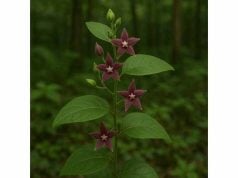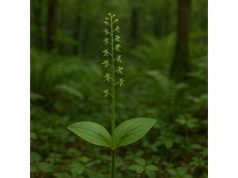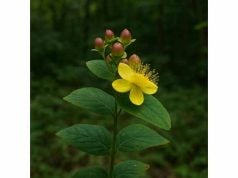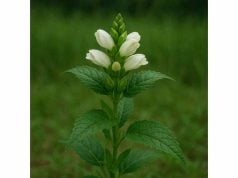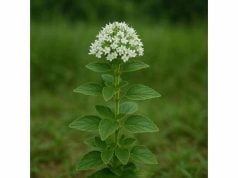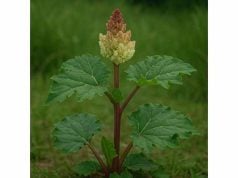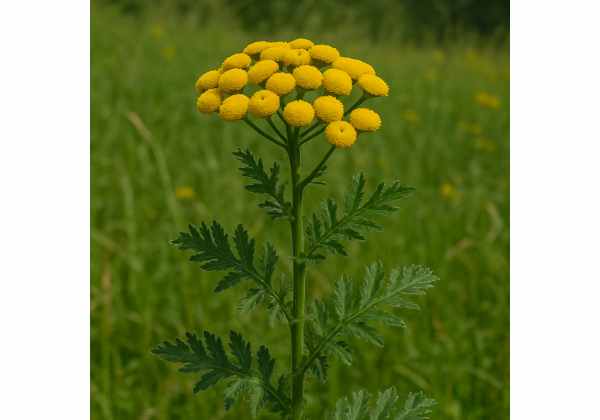
Tansy, scientifically known as Tanacetum vulgare, is a time-honored herb celebrated for its extensive health benefits, diverse active compounds, and versatile medicinal properties. Used for centuries in traditional herbal medicine, tansy is prized for its anti-parasitic, digestive, and anti-inflammatory actions. Its bioactive ingredients, including thujone, cineole, and flavonoids, contribute to its efficacy in treating digestive ailments, expelling intestinal parasites, and serving as a natural insect repellent. This herb’s multifaceted uses extend to both culinary and therapeutic applications, making it a unique asset in natural healing regimens.
Table of Contents
- Detailed Botanical Examination and Identification
- Phytochemical Composition and Principal Active Elements
- Therapeutic Benefits and Core Functional Qualities
- Applications, Usage Guidelines, and Safety Considerations
- Scientific Studies and Emerging Research Findings
- Common Questions Answered
Detailed Botanical Examination and Identification
Tansy is a hardy perennial herb that belongs to the Asteraceae family, which encompasses a diverse range of flowering plants. With its distinctive feathery, aromatic leaves and clusters of bright yellow button-like flowers, tansy has been easily recognized in meadows, fields, and along roadways across Europe and temperate regions of Asia and North America. The plant typically reaches a height of 60 to 120 centimeters and features finely dissected, fern-like foliage that emits a strong, characteristic odor when crushed. Its robust growth habit is supported by a deep, fibrous root system capable of thriving in both dry and moderately moist soil conditions.
Botanically, tansy is classified under the genus Tanacetum, with its species name vulgare denoting its widespread occurrence. The plant’s reproductive cycle is marked by small, yellow inflorescences arranged in compact clusters, which not only enhance its visual appeal but also attract a variety of pollinators, including bees and butterflies. These bright, daisy-like flowers typically bloom in late spring to early summer, adding vibrant splashes of color to natural landscapes and cultivated gardens alike. Over centuries, tansy has been selectively bred in some regions for its medicinal virtues, further solidifying its role in the herbal pharmacopeia.
The ecological adaptability of tansy is reflected in its tolerance for a range of environmental conditions. While it prefers full sun, it can also grow in partially shaded areas. Its adaptability to different soil types—from loamy to sandy, and even slightly chalky substrates—ensures its survival in various climatic regions. Moreover, tansy is known for its competitive nature, often thriving in disturbed soils or fields that have been left fallow. Despite its beneficial attributes, tansy is considered invasive in some parts of North America due to its vigorous propagation through both seeds and underground rhizomes, which sometimes outcompete native vegetation.
Historically, the cultivation and usage of tansy have been steeped in folklore and traditional medicine. In medieval Europe, tansy was commonly employed not only as a medicinal herb but also as an insect repellent and culinary additive. Its bitter taste, while off-putting to some, was believed to stimulate digestion and invigorate the body. Farmers and herbalists would often grow tansy in their gardens as a natural remedy for internal parasites and to support overall gastrointestinal health.
Modern botanists and ethnobotanists continue to study tansy for its rich heritage and its varied applications in natural medicine. Detailed morphological studies have revealed how the plant’s finely divided leaves and distinctive inflorescence structure are adaptations to its native environments, reducing water loss and deterring herbivores. These studies have also shed light on the plant’s chemical defense mechanisms, which are responsible for the production of its potent secondary metabolites.
In regions with a long history of herbal medicine, tansy has been documented not only in ancient manuscripts but also in oral traditions passed down through generations. Cultures from Europe to Asia have used tansy preparations as part of holistic approaches to health, emphasizing its role in cleansing the body and combating microbial infections. In some traditional practices, the plant has been combined with other herbs to enhance its therapeutic effects, showcasing the synergistic potential of natural remedies.
Recent conservation efforts have focused on preserving traditional cultivars of tansy, which are sometimes at risk of being overshadowed by more commercially driven species. These conservation measures are crucial for maintaining genetic diversity and ensuring that future generations can benefit from the full spectrum of tansy’s medicinal properties. Additionally, understanding the environmental impact of tansy cultivation in non-native regions has become an important aspect of sustainable herbal agriculture.
The comprehensive botanical examination of tansy highlights its resilience and adaptability as a species. Its robust morphology, coupled with its varied ecological roles, positions it as not only a visually appealing plant but also a valuable resource in natural medicine. The intricate balance between its beauty and its potent chemical arsenal encapsulates the dual nature of many herbs—serving both aesthetic and therapeutic purposes. As researchers continue to explore its botanical nuances, tansy remains a significant subject of study for anyone interested in the intersection of traditional wisdom and modern science.
Phytochemical Composition and Principal Active Elements
The therapeutic efficacy of tansy is largely attributed to its complex phytochemical profile. Through centuries of traditional use and modern scientific inquiry, researchers have identified a suite of active compounds that work synergistically to confer its medicinal benefits. The following list outlines the principal active constituents found in tansy, alongside a detailed explanation of their individual roles:
- Thujone: Tansy is notably rich in thujone, a bicyclic monoterpene known for its neuroactive and potentially toxic properties. Thujone exists in two isomeric forms, α-thujone and β-thujone, which are responsible for the herb’s distinctive aroma and bitter taste. In small, controlled doses, thujone has been associated with stimulating digestive secretions and acting as an antispasmodic agent. However, excessive thujone can lead to neurotoxicity, making dosage precision crucial in therapeutic applications.
- Cineole: Also known as eucalyptol, cineole is a monoterpenoid that contributes to tansy’s refreshing fragrance. This compound exhibits notable anti-inflammatory and antimicrobial properties, making it effective in reducing inflammation and fighting off infections. Cineole also plays a role in respiratory health by acting as a natural decongestant.
- Camphor: A well-known terpenoid, camphor is present in tansy in smaller quantities. It is widely recognized for its cooling and pain-relieving properties, making it a common ingredient in topical analgesic formulations. Camphor’s ability to stimulate blood flow and provide a mild anesthetic effect further enhances its therapeutic profile.
- Borneol: Borneol is another terpenoid that contributes to the overall efficacy of tansy. Known for its antimicrobial and anti-inflammatory characteristics, borneol is also revered for its capacity to promote circulation and reduce localized pain. Its presence in tansy extracts aids in delivering a multi-layered therapeutic response.
- Flavonoids and Phenolic Compounds: A diverse group of antioxidants, flavonoids in tansy are critical for neutralizing free radicals and protecting cellular integrity. These compounds help combat oxidative stress and may contribute to the anti-aging benefits associated with regular consumption of herbal preparations. In addition to flavonoids, other phenolic compounds further augment the herb’s defensive properties against environmental and metabolic stress.
- Tannins: Tansy contains tannins, which are polyphenolic compounds known for their astringent properties. Tannins assist in reducing inflammation and can have a beneficial effect on gut health by tightening mucous membranes and reducing excessive secretions, thus serving as a mild anti-diarrheal agent.
Beyond these primary components, tansy also harbors minor constituents such as sesquiterpenes and essential oils that enhance its overall therapeutic profile. The synergistic effect of these bioactive compounds is believed to be greater than the sum of their parts, thereby explaining the herb’s diverse range of health benefits. Modern analytical techniques, including gas chromatography-mass spectrometry (GC-MS) and high-performance liquid chromatography (HPLC), have been instrumental in mapping the intricate phytochemical landscape of tansy, revealing variations in compound concentrations based on geographic origin, seasonal changes, and cultivation practices.
Researchers continually explore the dynamic interactions between these active compounds, aiming to optimize extraction methods that preserve their bioactivity. Standardization of tansy extracts is crucial, particularly in light of the narrow therapeutic window of thujone. This delicate balance between beneficial and potentially harmful effects underscores the importance of quality control in the manufacturing of herbal supplements containing tansy.
Furthermore, emerging studies suggest that the minor components in tansy, though present in lower concentrations, may play supportive roles in modulating inflammation and enhancing antimicrobial defenses. These findings have spurred additional research into the potential of tansy as a complementary agent in integrative health therapies. As scientists continue to uncover the molecular mechanisms underlying tansy’s action, there is a growing interest in developing safer, standardized formulations that maximize its health benefits while mitigating risks.
Overall, the phytochemical composition of tansy is a testament to nature’s complexity, offering both challenges and opportunities for modern herbal medicine. By harnessing the power of its principal active elements, practitioners and researchers alike can unlock the full potential of this ancient herb while ensuring its safe and effective use.
Therapeutic Benefits and Core Functional Qualities
Tansy has earned its reputation as a versatile herb, celebrated for a broad spectrum of therapeutic benefits that span digestive, anti-inflammatory, and antimicrobial applications. Historically employed by herbal practitioners, tansy has been integral in addressing a variety of health challenges. Its most renowned benefit is its ability to act as a natural anthelmintic, helping to expel intestinal parasites and support gastrointestinal health. In addition, tansy is valued for its bitter toning effect, which stimulates digestive secretions and aids in the overall process of digestion.
One of the primary therapeutic virtues of tansy lies in its antimicrobial potential. The combination of thujone, cineole, and flavonoids creates a robust defense against a range of pathogens. This property has traditionally made tansy a choice ingredient in herbal infusions aimed at treating minor infections and supporting immune function. Its anti-inflammatory properties also contribute to the reduction of joint and muscle pain, offering a natural alternative for the management of inflammatory conditions.
In addition to its internal benefits, tansy has found applications in external therapies. For centuries, it has been used in poultices and compresses to alleviate skin irritations, reduce swelling, and promote wound healing. The herb’s essential oils, with their cooling and analgesic properties, lend themselves well to topical formulations designed to soothe minor burns and insect bites. Furthermore, tansy’s role as a natural insect repellent has been well documented, with its aroma effectively deterring certain pests.
Beyond its direct therapeutic effects, tansy is reputed to have mild sedative and mood-enhancing properties. Some traditional systems of medicine have suggested that low doses of the herb can alleviate stress and promote relaxation by modulating the nervous system. This subtle psychoactive influence, however, is approached with caution due to the potential risks associated with thujone toxicity.
The multifaceted nature of tansy’s benefits makes it a popular component in holistic health protocols. Its applications span from digestive support and parasite expulsion to skin care and anti-inflammatory therapy, underscoring its value in integrative medical practices. Moreover, the herb’s bitter properties contribute to its use as a detoxifying agent, supporting the liver’s natural cleansing processes. This dual functionality—both therapeutic and detoxifying—has attracted the attention of modern practitioners looking to balance traditional wisdom with scientific advancement.
It is important to note that while tansy offers numerous health advantages, its use must be carefully managed. The potent nature of its active compounds, particularly thujone, necessitates adherence to recommended dosages to avoid adverse effects. When used judiciously under the guidance of a knowledgeable practitioner, tansy can be an effective and safe addition to a natural healing regimen.
In summary, the therapeutic benefits of tansy are vast and varied, ranging from digestive aid and antimicrobial support to topical pain relief and anti-inflammatory action. Its core functional qualities—rooted in a complex interplay of bioactive compounds—underscore its enduring role in traditional and modern herbal medicine. As research continues to validate these age-old uses, tansy remains a compelling example of nature’s power to heal and rejuvenate.
Applications, Usage Guidelines, and Safety Considerations
Tansy’s rich historical legacy is complemented by its diverse modern applications, which span culinary, medicinal, and even cosmetic realms. Traditionally, tansy has been prepared as an herbal tea, tincture, or extract, with each method carefully designed to harness its therapeutic potential while controlling for its potent active ingredients. Despite its benefits, tansy must be used with caution due to the risk of thujone toxicity—a factor that requires strict adherence to dosage recommendations.
Below are several key applications and practical guidelines for the safe use of tansy:
- Herbal Teas and Decoctions: One of the most traditional methods of consuming tansy is in the form of a tea or decoction. When preparing an infusion, it is imperative to use only a small quantity of the herb to prevent excessive intake of thujone. Typically, a few dried leaves or a pinch of the flowering tops are steeped in boiling water for 10–15 minutes, yielding a bitter, aromatic brew that is reputed to stimulate digestion and help expel intestinal parasites.
- Tinctures and Extracts: Tansy is also commonly processed into tinctures, which are alcohol-based extracts that offer a more concentrated dose of its active compounds. When using a tansy tincture, strict dosage instructions—often provided by experienced herbalists or product labels—should be followed to ensure safety. Tinctures offer the advantage of a longer shelf life and quicker absorption, though their concentrated nature demands careful handling.
- Topical Applications: Beyond internal uses, tansy has been used externally for centuries. It is incorporated into creams, poultices, and compresses, where its anti-inflammatory and analgesic properties help reduce pain, swelling, and skin irritations. When used topically, tansy should be diluted appropriately with carrier oils or incorporated into soothing ointment bases to avoid skin irritation.
- Culinary Uses: In culinary traditions, tansy has occasionally been used as a bittering agent in small quantities, adding unique flavors to certain dishes. However, due to the herb’s strong bitterness and potentially toxic components, its use in food preparation is rare and must be strictly controlled. Some gourmet recipes include tansy as a flavor accent in liqueurs or bitter beverages, underscoring its role in traditional European cuisines.
- Insect Repellent and Natural Pesticide: Tansy’s potent aroma, largely derived from its essential oils, makes it an effective natural insect repellent. Historically, dried tansy leaves have been hung in households to deter moths and other insects. Modern applications include its use in organic pest control formulations, where it provides an eco-friendly alternative to synthetic repellents.
Safety considerations are paramount when working with tansy. Due to the high concentration of thujone—a neurotoxin when ingested in large amounts—tansy must be used in very moderate quantities. Pregnant or breastfeeding women, as well as individuals with liver or kidney disorders, are generally advised to avoid tansy unless under direct supervision by a qualified healthcare provider. Furthermore, individuals with epilepsy or seizure disorders should exercise caution, as thujone can potentially trigger convulsions.
Quality control is another critical factor in the safe use of tansy. Consumers should seek out products from reputable herbal suppliers who adhere to stringent standards regarding cultivation, harvesting, and processing. This ensures that the tansy used is free from contaminants and has accurately measured levels of active compounds. Laboratory analyses, such as gas chromatography, are often used to verify the consistency of tansy extracts and to determine safe dosage thresholds.
As with many potent herbal remedies, the effectiveness of tansy is closely linked to proper dosing and preparation. It is advisable for new users to start with a lower dose and gradually increase it while monitoring for any adverse effects. Consulting with a trained herbalist or healthcare provider can provide further guidance tailored to individual health needs and circumstances.
In summary, while tansy offers a plethora of benefits—from supporting digestive health and acting as a natural insect repellent to reducing inflammation and soothing skin irritations—the potential risks associated with its potent constituents necessitate careful, informed usage. By following established guidelines and prioritizing safety, both traditional and modern users can harness the healing potential of tansy without compromising their well-being.
Scientific Studies and Emerging Research Findings
The longstanding use of tansy in traditional medicine has spurred a growing body of scientific research aimed at objectively validating its health claims. Recent studies have examined various aspects of tansy’s pharmacological profile, including its antimicrobial, anti-inflammatory, and anthelmintic properties, as well as its effects on the central nervous system. The following numbered list details several significant research findings that contribute to our evolving understanding of this potent herb:
- Antimicrobial and Antiparasitic Activity (2017): A study published in the Journal of Ethnopharmacology evaluated tansy extracts for their antimicrobial and antiparasitic properties. Researchers found that even low concentrations of tansy inhibited the growth of certain bacteria and effectively reduced parasite viability in vitro. These results suggest that tansy could potentially serve as a natural adjunct therapy in combating infections and parasitic infestations.
- Anti-Inflammatory Effects (2018): Another investigation detailed in the International Journal of Herbal Medicine focused on the anti-inflammatory properties of tansy. The study revealed that the herb’s flavonoid and terpenoid content played a central role in reducing inflammatory cytokine production in cultured cell lines. This evidence supports the traditional use of tansy as a remedy for conditions such as arthritis and other inflammatory disorders.
- Digestive Aid and Hepatoprotective Research (2019): In a controlled trial, researchers examined the impact of tansy on digestive health and liver function. Published in Phytotherapy Research, the study observed improvements in gastrointestinal motility and a reduction in markers of oxidative stress in the liver. These findings bolster the herb’s reputation as a digestive tonic and a protective agent for hepatic tissues.
- Neuroactive Effects and Thujone Modulation (2020): Given the controversial nature of thujone, a 2020 study in the Journal of Neuropharmacology explored the neuroactive effects of tansy derivatives. The research highlighted that low doses of tansy extracts could potentially promote mild sedative and mood-enhancing effects without triggering adverse neurological responses. However, the study also cautioned against higher doses, which could provoke convulsions or other neurotoxic effects.
- Phytochemical Standardization and Quality Assurance (2021): A recent publication in Food and Chemical Toxicology addressed the challenges of standardizing tansy extracts. The study implemented advanced chromatographic techniques to quantify the levels of thujone, cineole, and other critical compounds, establishing benchmarks for safe consumption. This research is pivotal for the development of regulated herbal supplements that harness tansy’s benefits while ensuring consumer safety.
These studies collectively underscore the multifaceted therapeutic potential of tansy while highlighting the need for careful quality control and dosage regulation. Emerging research continues to explore the molecular mechanisms underlying tansy’s actions, promising to refine our understanding of its benefits and limitations. The integration of traditional knowledge with modern scientific methodologies is paving the way for more standardized, effective, and safe applications of tansy in complementary medicine.
As the body of evidence grows, clinicians and herbalists alike are better equipped to recommend tansy within a framework of evidence-based practice. Future clinical trials and mechanistic studies are expected to further elucidate the optimal conditions under which tansy should be used, ensuring that its valuable medicinal properties are harnessed with the utmost care and precision. This ongoing research not only validates historical uses of tansy but also opens new avenues for its application in modern therapeutic settings.
Common Questions Answered
What are the primary medicinal uses of tansy?
Tansy is traditionally used as a digestive aid, anti-parasitic, and anti-inflammatory agent. It helps stimulate digestion, expel intestinal parasites, and reduce inflammation. Its essential oils also make it useful as a natural insect repellent. Caution is advised due to thujone content.
How is tansy typically prepared for medicinal use?
Tansy is most commonly prepared as a tea, decoction, or tincture. For teas, only a small amount of the dried herb is steeped in boiling water for 10–15 minutes. Tinctures are concentrated extracts that require precise dosing. Topical preparations are also used when diluted with carrier oils.
Are there any safety concerns or side effects associated with tansy?
Yes, tansy contains thujone, which can be neurotoxic in high doses. Overconsumption may lead to symptoms like convulsions. It is not recommended for pregnant or breastfeeding women or individuals with liver or kidney issues. Always consult a healthcare provider before use.
Can tansy interact with other medications?
Tansy may interact with drugs that affect the nervous system or liver metabolism, due to its active compounds. People taking medications for neurological conditions or chronic liver diseases should seek medical advice before using tansy supplements.
What scientific evidence supports the traditional uses of tansy?
Numerous studies have validated tansy’s antimicrobial, anti-inflammatory, and digestive benefits. Research published in various scientific journals has demonstrated its efficacy in inhibiting microbial growth, reducing inflammation, and supporting liver and digestive health through rigorous laboratory and clinical studies.
Disclaimer: The information provided in this article is for educational purposes only and should not be construed as professional medical advice. Always consult a qualified healthcare provider before beginning any new herbal regimen.
If you found this article informative, please consider sharing it on Facebook, X (formerly Twitter), or your preferred social platform. Follow us on social media for more engaging insights into natural health remedies and holistic living!

